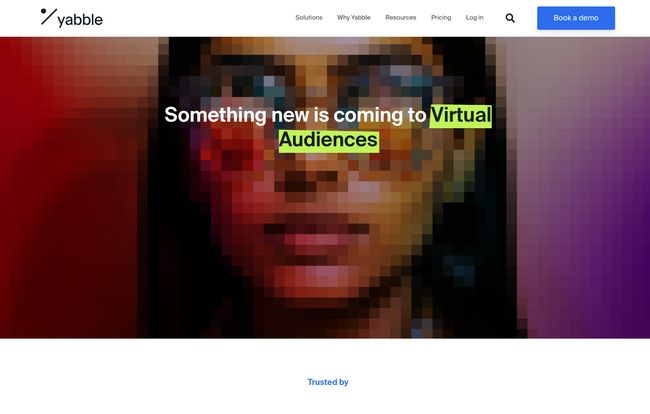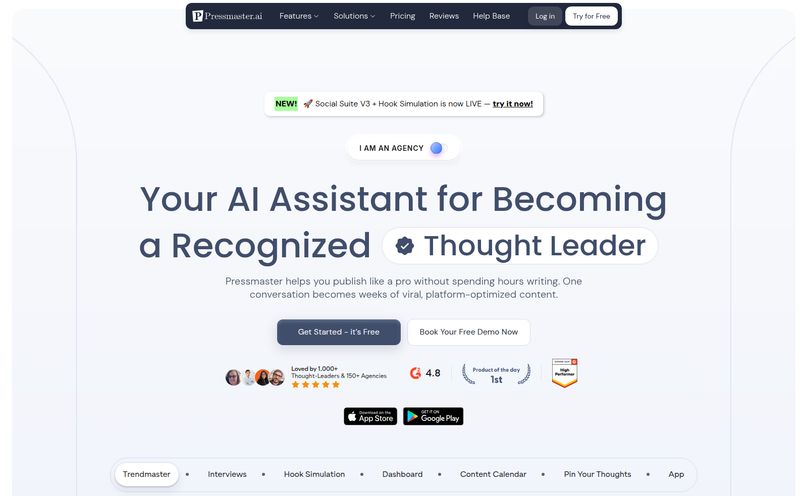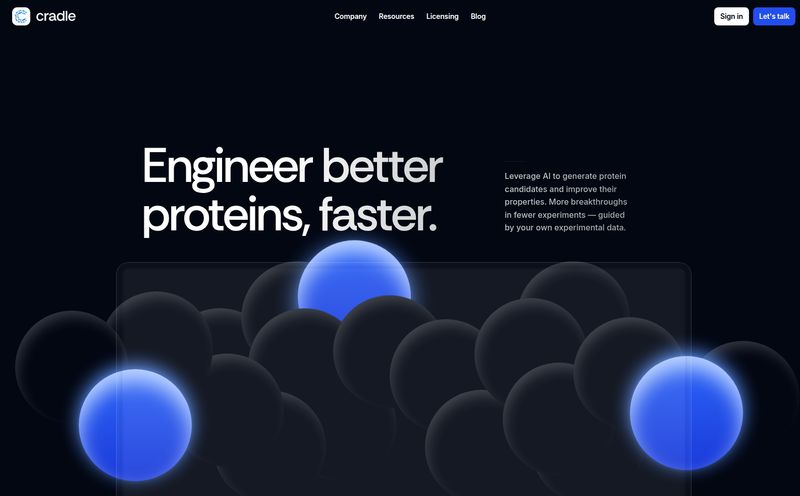If you’ve been in marketing or research for more than a week, you know the feeling. You run a brilliant survey, ask some killer open-ended questions, and you’re buried alive in a mountain of text data. Thousands of responses, each one a little golden nugget of insight, but they're all trapped in a spreadsheet that scrolls for an eternity. The old way? Hours—no, days—of manually coding themes, squinting at your screen, and chugging coffee until you can practically taste the pixels. It's a grind.
I’ve been there. I once spent the better part of a week trying to make sense of 5,000 customer reviews for a CPG client. By the end, I think I was dreaming in spreadsheets. So, when a tool comes along that promises to do it all in minutes using AI, my ears perk up. But my skepticism meter goes way up, too.
That tool is Yabble. It’s been making waves, promising to be your AI research assistant, your data summarizer, and even your focus group. But does it live up to the hype? Or is it another expensive, shiny object? I decided to take a proper look.
So, What is Yabble, Really?
At its heart, Yabble is an AI-powered insights platform designed to make sense of data, particularly messy, unstructured text data. Think of it less as a simple dashboard and more as a translator for your audience. It takes all that raw feedback—customer reviews, survey responses, support tickets—and turns it into clean, actionable themes and summaries. No more manual coding. No more spreadsheet-induced nightmares.
The platform is built on a few core tools that work together. It’s not just one thing; it's a whole suite designed to help you generate, analyze, and even chat with your data. The goal is pretty clear: get to the 'why' behind the numbers, and do it fast.

Visit Yabble
The Yabble Toolkit: A Closer Look
Yabble isn't just a single-trick pony. It’s broken down into a few key features, each tackling a different part of the research process. Some of it feels like a logical next step for analytics, and some of it feels… well, a little like science fiction.
Talking to AI with Virtual Audiences
Okay, this is the one that really caught my eye. Yabble’s Virtual Audiences feature lets you create AI personas based on specific demographics and psychographics. You can then ‘interview’ these personas, testing new product concepts, ad copy, or brand messaging. Want to know how a 25-year-old, eco-conscious male from California might react to your new sustainable packaging? You can literally just ask.
Is it a perfect replacement for a real-life focus group? Probably not. You miss the spontaneous, human group dynamics. But as a tool for rapid-fire ideation and gut-checking concepts before you spend big money on real-world research? It’s incredibly compelling. It’s like having a focus group on standby, 24/7.
Making Sense of the Mess with Gen and Count
This is the bread and butter. Count is the tool that automates the theming and sentiment analysis of your text data. You feed it your giant spreadsheet of open-ended responses, and it quickly groups them into coherent themes and tells you whether the sentiment is positive, negative, or neutral. This is the feature that would have saved me that soul-crushing week I mentioned earlier.
Gen acts as your AI research assistant on top of that. Once your data is processed, you can ask it questions in plain English. Things like, “What are the main reasons customers are unhappy with our delivery service?” or “Summarize the top 5 positive themes from the survey.” It’s an interactive way to dig into the findings without having to build complex filters or pivot tables. It's about having a conversation with your data.
Getting the TL;DR with Summarize
We all have stakeholders who just want the bottom line. The Summarize tool is built for them. It takes dense reports or large datasets and creates concise, insightful summaries. It’s designed to pull out the most critical information and present it in a digestible format, which is perfect for those weekly reports or executive briefings. It helps bridge the gap between deep analysis and high-level decision-making.
Let's Talk Turkey: Yabble's Pricing
Alright, let’s get to the part everyone’s waiting for. A tool this powerful can’t be cheap, right? And you'd be correct. Yabble is a premium platform, and it carries a premium price tag. There's no getting around it.
The pricing is subscription-based and works on a credit system, where different actions in the platform use up credits. It's positioned squarely at established teams and enterprises, not so much for the solopreneur or small startup. Honestly, when I first saw the pricing page, I did a double-take.
| Tier | Annual Price (USD) | Included Credits | Best For |
|---|---|---|---|
| Tier 0 (Starter) | $8,900 | 45,000 | Getting started, smaller projects |
| Tier 1 | $20,000 | 120,000 | Individuals or small teams |
| Tier 2 (Recommended) | $40,000 | 275,000 | Mid-sized teams with regular needs |
| Tier 3 | $80,000 | 650,000 | Large teams, ongoing insights |
That entry point of nearly $9,000 per year is significant. The question isn't just "can you afford it?" but "what's the ROI?" If you're currently spending tens of thousands on research agencies or have analysts spending hundreds of hours on manual work, the cost can suddenly look a lot more reasonable. It’s a classic case of spending money to save money (and time, and sanity).
The Good, The Bad, and The AI
No tool is perfect. So let's break it down, no sugarcoating.
The Good Stuff
The speed is undeniable. Generating rich insights in minutes instead of days is a massive advantage. It allows teams to be more agile, reacting to customer feedback almost in real-time. The platform is also surprisingly intuitive. Despite its power, it doesn't feel like you need a data science degree to use it, which is a huge win for democratizing insights across a company. And honestly, the quality of life improvement for anyone who's had to do this work manually is just… chef’s kiss.
A Reality Check
The first and most obvious hurdle is the price. It's a serious investment. Secondly, it's still AI. As someone who's worked with algorithms for years, I have a healthy dose of professional paranoia. You should always sense-check the results. Don't just blindly trust the AI's summary. Use it as an incredibly powerful starting point, but apply your human brain and contextual knowledge. I once trusted an AI sentiment tool that marked a comment as positive because it used the word "sick." The comment was, "Your app is sick, it crashes every five minutes." Yeah. Context matters. So, validation is still part of the workflow.
The credit system can also be a point of friction for some. It can be hard to predict usage, though it does encourage you to be efficient with your analysis.
My Final Verdict: Should You Yabble?
After digging in, here's my take: Yabble is not for everyone. And that’s okay.
If you're a small business or a freelancer who analyzes a survey once a quarter, this is probably overkill. It’s like buying a cement mixer to pot a single plant. There are simpler, cheaper tools out there for basic analysis.
However, if you are a market research manager, a CX professional, or a product leader at a mid-to-large sized company, and your team is constantly bogged down with analyzing qualitative data, Yabble could be a game-changer. It's for teams who understand that the cost of slow, poor, or non-existent insights is far greater than the subscription fee. When you compare its cost to the salary of a data analyst or the price of a single big study from a traditional research firm, the value proposition starts to click into place. It’s an investment in speed, agility, and better decision-making.
Frequently Asked Questions about Yabble
1. What kind of data can Yabble analyze?
Yabble shines with unstructured text data. This includes open-ended survey responses, customer support conversations, online reviews, social media comments, and any other large body of text where you need to find themes and sentiment.
2. Is Yabble difficult to use?
From what I've seen, one of its strengths is its user-friendly interface. It's designed to be intuitive for marketers and researchers, not just data scientists. While there's a learning curve with any powerful tool, it's not considered exceptionally steep.
3. How does the credit system work?
Essentially, every major action you take within the Yabble platform—like uploading data for counting, running a summary, or querying Gen—consumes a certain number of credits. Your annual subscription gives you a large pool of these credits to use throughout the year.
4. Can Yabble replace a human data analyst?
In my opinion, no. It’s a tool that empowers an analyst, making them vastly more efficient. The AI handles the heavy lifting of processing and initial theming, freeing up the analyst to focus on higher-level strategic interpretation, storytelling, and connecting the dots—the stuff humans are uniquely good at.
5. Are there cheaper alternatives to Yabble?
Yes, there are other text analysis and sentiment analysis tools on the market, some with lower price points. However, few offer the same integrated suite of tools, especially the innovative 'Virtual Audiences' feature. The choice depends on whether you need a point solution or a comprehensive insights platform.
6. How accurate is Yabble's AI?
The underlying technology is advanced, but as with any AI, it's not infallible. The platform is trusted by major brands like P&G and McDonald's, which suggests a high level of reliability. However, best practice is always to review and validate the AI's output with human expertise, especially for critical business decisions.
Conclusion
Yabble is a powerful, impressive, and, yes, expensive platform. It represents a significant step forward in how we can interact with and understand customer data. For the right company—one that is drowning in data and hungry for faster insights—it could be a transformative investment. It automates the grunt work, allowing smart people to focus on being strategic. And in today’s world, that speed and focus might just be the biggest competitive advantage of all.



